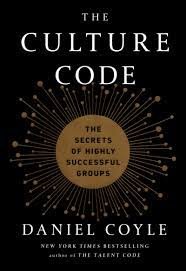meme dump!
- Thread starter bbyrd009
- Start date
-
Welcome to Christian Forums, a Christian Forum that recognizes that all Christians are a work in progress.
You will need to register to be able to join in fellowship with Christians all over the world.
We hope to see you as a part of our community soon and God Bless!
You are using an out of date browser. It may not display this or other websites correctly.
You should upgrade or use an alternative browser.
You should upgrade or use an alternative browser.
Brakelite
Well-Known Member
- Nov 30, 2016
- 33,943
- 12,082
- 113
- Faith
- Christian
- Country
- United States Minor Outlying Islands
Brakelite
Well-Known Member
- Nov 30, 2016
- 33,943
- 12,082
- 113
- Faith
- Christian
- Country
- United States Minor Outlying Islands
- Nov 30, 2016
- 33,943
- 12,082
- 113
- Faith
- Christian
- Country
- United States Minor Outlying Islands
- Nov 30, 2016
- 33,943
- 12,082
- 113
- Faith
- Christian
- Country
- United States Minor Outlying Islands

“How to be a little child” perhaps:
“Let’s start with a question, which might be the oldest question of all: Why do certain groups add up to be greater than the sum of their parts, while others add up to be less?
A few years ago the designer and engineer Peter Skillman held a competition to find out. Over several months, he assembled a series of four-person groups at Stanford, the University of California, the University of Tokyo, and several other places. He challenged each group to build the tallest possible structure using the following items:
• twenty pieces of uncooked spaghetti
• one yard of transparent tape
• one yard of string
• one standard-size marshmallow
The contest had one rule: The marshmallow had to end up on top. The fascinating part of the experiment, however, had less to do with the task than with the participants. Some of the teams consisted of business school students. The others consisted of kindergartners.
The business students got right to work. They began talking and thinking strategically. They examined the materials. Introduction When Two Plus Two Equals Ten xvi Introduction They tossed ideas back and forth and asked thoughtful, savvy questions. They generated several options, then honed the most promising ideas. It was professional, rational, and intelligent. The process resulted in a decision to pursue one particular strategy. Then they divided up the tasks and started building.
The kindergartners took a different approach. They did not strategize. They did not analyze or share experiences. They did not ask questions, propose options, or hone ideas. In fact, they barely talked at all. They stood very close to one another. Their interactions were not smooth or organized. They abruptly grabbed materials from one another and started building, following no plan or strategy. When they spoke, they spoke in short bursts: “Here! No, here!” Their entire technique might be described as trying a bunch of stuff together.
If you had to bet which of the teams would win, it would not be a difficult choice. You would bet on the business school students, because they possess the intelligence, skills, and experience to do a superior job. This is the way we normally think about group performance. We presume skilled individuals will combine to produce skilled performance in the same way we presume two plus two will combine to produce four.
Your bet would be wrong. In dozens of trials, kindergartners built structures that averaged twenty-six inches tall, while business school students built structures that averaged less than ten inches.*
The result is hard to absorb because it feels like an illusion…”
Last edited:
- Nov 30, 2016
- 33,943
- 12,082
- 113
- Faith
- Christian
- Country
- United States Minor Outlying Islands
- Nov 30, 2016
- 33,943
- 12,082
- 113
- Faith
- Christian
- Country
- United States Minor Outlying Islands
I was thinking of making a silly comic, something like this:
-God creates Adam in the Garden of Eden
-God says "It is not good that he should be alone. We must create the perfect companion suitable for him"
-Next scene: Adam is playing happily with a dog, saying "whatcha got there boy?" and the dog has a dead snake in its mouth
-God gives the dog a thumbs up
Lambano
Well-Known Member
I love it!I was thinking of making a silly comic, something like this:
-God creates Adam in the Garden of Eden
-God says "It is not good that he should be alone. We must create the perfect companion suitable for him"
-Next scene: Adam is playing happily with a dog, saying "whatcha got there boy?" and the dog has a dead snake in its mouth
-God gives the dog a thumbs up
- Nov 30, 2016
- 33,943
- 12,082
- 113
- Faith
- Christian
- Country
- United States Minor Outlying Islands
BarneyFife
Well-Known Member
BarneyFife
Well-Known Member
- Nov 30, 2016
- 33,943
- 12,082
- 113
- Faith
- Christian
- Country
- United States Minor Outlying Islands
Byrd..truly a skewed chart. What is your source mate, I would love to know it.
Then find me a chart showing the last 80 years plus and you will find truly the reverse to even a higher degree...
Similar threads
- Replies
- 65
- Views
- 1K
- Replies
- 7
- Views
- 445
- Replies
- 11
- Views
- 335
- Replies
- 64
- Views
- 2K

















